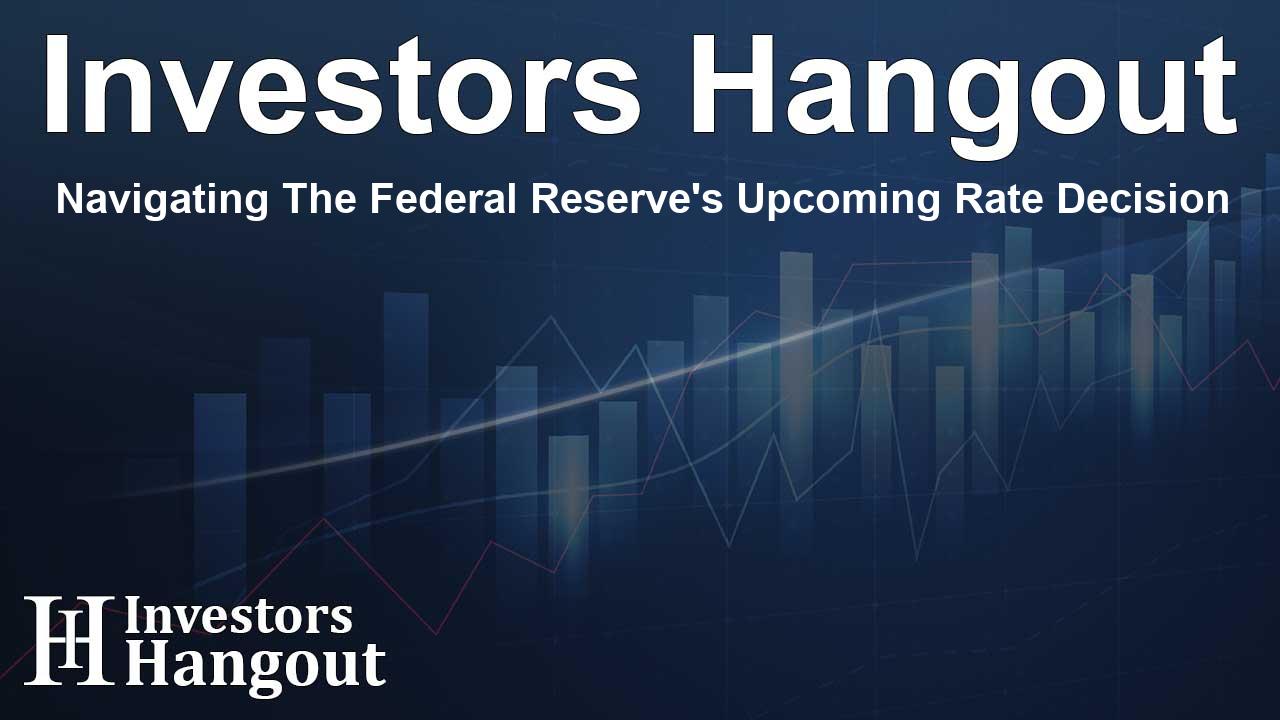Navigating The Federal Reserve's Upcoming Rate Decision

Understanding the Federal Reserve's Upcoming Rate Decision
As the Federal Reserve approaches a critical moment to decide on interest rate changes, many are paying close attention. There’s a strong sense of anticipation about whether the central bank will choose to implement a cut of 25 basis points (bps) or perhaps even a larger cut of 50 bps. Complicating matters, there’s increasing investor optimism for a more aggressive stance, largely due to a resilient economy that may still be vulnerable to inflationary pressures.
Most investors seem to be leaning towards a rate cut. However, the Fed is likely to proceed with caution. It’s possible that the executives at the bank will prefer a more measured reduction of 25 bps. They might hesitate to make a sharp cut, as that could risk overheating an economy that shows ongoing strength. This places Fed Chair Jerome Powell and his team in a tricky position.
Why a 25bps Cut Might Not Meet Expectations
The idea of a modest 25bps rate cut might not sit well with market participants. With high hopes for a more significant easing that could further bolster the stock market, many are now looking toward a cut of 50bps instead. Currently, the S&P 500 is hovering near historical highs, and expectations for a bigger reduction have only risen in the past few weeks.
If the Fed opts for a smaller cut, it could lead to disappointment in the markets. Investors might view this choice as a sign that the Fed prefers to stick with a conservative monetary policy rather than taking decisive steps to encourage economic growth. Such a perception could provoke a selloff, as many traders might interpret the Fed’s caution as an indication of deeper economic issues.
Moreover, the market has already priced in the possibility of substantial cuts, with up to 100 basis points expected by the end of the year. So, a mere 25bps cut risks falling short of these market expectations, potentially causing a broader pullback in risk-sensitive investments.
Examining the Risks of a 50bps Cut
On the other hand, while a 50bps cut might seem attractive, it carries its own risks. This more aggressive move could signal that the Fed is responding to more serious economic difficulties than previously thought. Such an action could trigger panic selling, as investors might start worrying about scenarios suggesting the economy is on less stable ground.
Additionally, dramatically lowering rates during a time when the economy is doing well could unintentionally reignite inflation, pushing it closer to previous highs. This outcome would contradict the Federal Reserve’s goal of keeping inflation stable, potentially leading to further market instability.
This presents a significant dilemma for Powell and the Fed. Opting for a substantial cut might send markets spiraling, reflecting fears of economic downturns. Thus, careful balancing is crucial to avoid unnecessary panic.
Chairman Powell's Challenging Situation
In summary, Powell is caught in a classic lose-lose scenario. On one hand, a modest 25bps reduction could result in market discontent and a sharp decline. On the other hand, a more pronounced 50bps cut might incite fear regarding the economy's wellbeing. The stakes are high, and uncertainty weighs heavily as investors await some clarity.
In light of these outcomes, Powell is likely to adopt a data-driven approach during the post-meeting press conference. His statements may emphasize long-term goals and leave open the possibility of future adjustments. However, even a cautious tone could still unsettle the markets, particularly if the Fed chooses the smaller cut.
Preparing for What's Next
No matter what decision the Federal Reserve makes, market volatility is on the horizon. Investors should focus on high-quality companies with strong fundamentals that can withstand potential market ups and downs.
Some noteworthy stocks to consider include major companies in the technology and healthcare sectors, such as Amazon (NASDAQ: AMZN), Tesla (NASDAQ: TSLA), and UnitedHealth Group (NYSE: UNH). These are key players, not only because of their market capitalization but also due to their resilience in uncertain economic times.
As the financial landscape shifts, it’s essential for investors to remain informed and adaptable in their investment strategies to navigate the changing tides.
Conclusion
The Federal Reserve's decision is a weighty one, with consequences that reach far beyond immediate market reactions. Investors are bracing for whatever comes next, realizing that even slight changes in interest rates can significantly impact their portfolios. The ongoing challenge of balancing growth stimulation with inflation control remains a critical concern.
Investors are advised to adjust their portfolios accordingly and be prepared for possible market volatility while keeping a close watch on economic indicators and the Fed’s forthcoming actions.
Frequently Asked Questions
What is the Federal Reserve's upcoming decision about?
The Federal Reserve is deciding whether to cut interest rates by 25 or 50 basis points in response to market and economic conditions.
Why are investors concerned about a 25bps cut?
Investors worry that a small cut may indicate a lack of confidence in taking substantial action to support economic growth, potentially leading to market disappointment.
What could happen if the Fed cuts rates by 50bps?
A 50bps cut might suggest significant economic concerns, which could spark panic selling in the markets and lead to increased volatility.
How should investors prepare for market reactions to rate changes?
Investors should focus on high-quality stocks with strong fundamentals and maintain flexibility in their investment strategies to adapt to potential volatility.
What stocks are recommended for uncertain market environments?
Notable mentions include Amazon (NASDAQ: AMZN), Tesla (NASDAQ: TSLA), and UnitedHealth Group (NYSE: UNH) due to their resiliency in shifting economic conditions.
About The Author
Contact Ryan Hughes privately here. Or send an email with ATTN: Ryan Hughes as the subject to contact@investorshangout.com.
About Investors Hangout
Investors Hangout is a leading online stock forum for financial discussion and learning, offering a wide range of free tools and resources. It draws in traders of all levels, who exchange market knowledge, investigate trading tactics, and keep an eye on industry developments in real time. Featuring financial articles, stock message boards, quotes, charts, company profiles, and live news updates. Through cooperative learning and a wealth of informational resources, it helps users from novices creating their first portfolios to experts honing their techniques. Join Investors Hangout today: https://investorshangout.com/
The content of this article is based on factual, publicly available information and does not represent legal, financial, or investment advice. Investors Hangout does not offer financial advice, and the author is not a licensed financial advisor. Consult a qualified advisor before making any financial or investment decisions based on this article. This article should not be considered advice to purchase, sell, or hold any securities or other investments. If any of the material provided here is inaccurate, please contact us for corrections.
